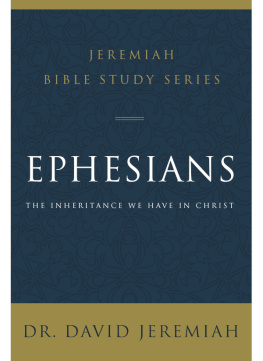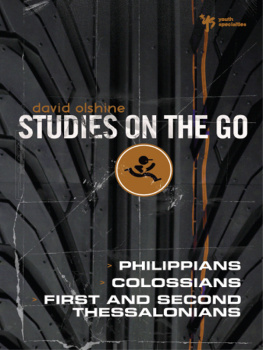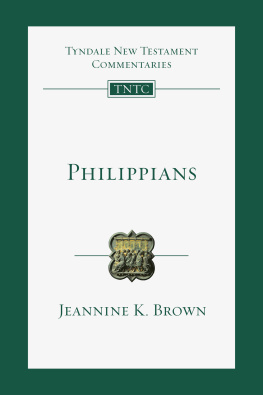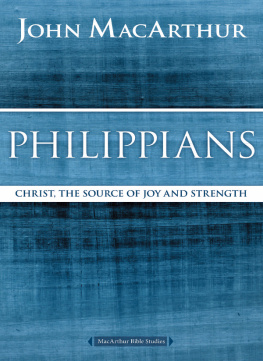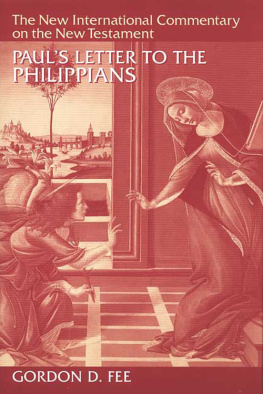COUNT IT ALL JOY
Published by David C Cook
4050 Lee Vance View
Colorado Springs, CO 80918 U.S.A.
David C Cook Distribution Canada
55 Woodslee Avenue, Paris, Ontario, Canada N3L 3E5
David C Cook U.K., Kingsway Communications
Eastbourne, East Sussex BN23 6NT, England
The graphic circle C logo is a registered trademark of David C Cook.
All rights reserved. Except for brief excerpts for review purposes,
no part of this book may be reproduced or used in any form
without written permission from the publisher.
The website addresses recommended throughout this book are offered as a resource to you. These websites are not intended in any way to be or imply an endorsement on the part of David C Cook, nor do we vouch for their content.
Unless otherwise noted, all Scripture quotations are taken from the New King James Version. Copyright 1982 by Thomas Nelson. Used by permission. All rights reserved. Scripture quotations marked KJV are taken from the King James Version of the Bible. (Public Domain.); PHILLIPS are taken from The New Testament in Modern English by J. B. Philips copyright 1960, 1972 J. B. Phillips. Administered by The Archbishops Council of the Church of England. Used by Permission
Other Scripture quotations are taken from The Holy Bible: A New Translation, 1922, 1924, 1925, 1926, 1935, by Harper & Row, Publishers, Inc. 1950, 1952, 1953, 1954, by James A. R. Moffatt ( MOFFATT ) and from Wuests Word Studies: Philippians in the Greek New Testament by Kenneth S. Wuest, 1942 by the Wm. B. Eerdmans Publishing Co. Used by permission.
The author has added italics to Scripture quotations for emphasis.
LCCN 2015952816
ISBN 978-1-4347-0875-5
eISBN 978-1-4347-1008-6
2016 David Jeremiah
Published in association with Yates & Yates, www.yates2.com.
First edition published by Victor Books/SP Publications, Inc. in 1992 David Jeremiah, ISBN 978-0-7814-4366-1, Turning Toward Joy
Readers Guide prepared by Patricia Picardi. The Team: Alex Field, Ingrid Beck, Amy Konyndyk, Nick Lee, Tiffany Thomas, Susan Murdock
Cover Design: Jon Middel
Cover Photo: Thinkstock
Second Edition 2016
1 2 3 4 5 6 7 8 9 10
111615
To Warren Wiersbe
Godly Example, Great Communicator, Gifted Writer, Good Friend
Contents
Acknowledgments
As I was finishing this first book in the new Turning Point series, I thought of the many people who had encouraged me in this project. Dr. Merritt Barber, a dentist in our church, has many times expressed to me the hope that someday our Bible study material could be packaged for use in home Bible studies. When you are in a dental chair and your mouth is full of Novocain, you cant do much else but listen. I did!
For the last five years, every time I have seen Victor Books Mark Sweeney, he has reminded me that we ought to work on such a project together. We finally did it, Mark! Warren Wiersbe, who has given us the wonderful Be series of Bible studies, has urged me often to begin this process. As we shared a meal in Dayton, Tennessee, he finally convinced me that I should make this a priority.
My father, Dr. James T. Jeremiah, has consistently reminded me that writing should be a part of my life. My wife, Donna, has cheered me on when the pressures of our busy life made the completion of this assignment seem impossible. Paul Joiner added a whole new dimension to our study of Gods Word through his creative writing and directing of the dramatic sketches that correspond to each lesson. Glenda Parker, my administrative assistant, diligently protected my time for study and writing. My friends around the country tell me she is the best gatekeeper they have ever met! Without her efforts, this book would not be a reality.
As I reflect upon all these wonderful friends, I am drawn to the words Paul used to express his love for the Philippian believers: I thank my God upon every remembrance of you.
Introduction
In 1620 a ship left Plymouth, England, carrying the seeds of life as we know it in the United States today. But that voyage, as important as it was, cannot rival the one in AD 52 that embarked from Troas and sailed toward Neapolis.
The apostle Paul, his fellow preacher Silas, Luke the physician and writer, and Pauls disciple Timothy were aboard the vessel that brought the seeds of spiritual life to all of Europe and eventually the United States. Biblical scholars have called this the greatest event in history! For four thousand years, Asia had been the cradle of the human race; now that center was moving to Europe.
As Paul embarked on his second missionary journey, it was his hope to return to all the churches he had visited on his previous excursion. But according to Acts 16:67, he was forbidden to go north to Asia or northeast to Bithynia. While in Troas, the Lord spoke to Paul through a vision, in which he saw a man from Macedonia pleading with him to come over and help the people there. Pauls response is recorded by Luke: Now after he had seen the vision, immediately we sought to go to Macedonia, concluding that the Lord had called us to preach the gospel to them (16:10).
Paul and his company left Troas via the most direct route to the seaport of Neapolis and from there to the most important city in Macedonia, Philippi. Located about nine miles from the coast of the Aegean Sea, Philippi was a Roman colony and a flourishing, wealthy city. When Paul and his associates arrived there, they found no synagogue; on the Sabbath they assembled at the riverside where worshippers had been gathering regularly for prayer. As a result of that first meeting, Lydia, a merchant woman, was converted and baptized. In gratitude for what the Lord had done in her life, she offered her home as a place of lodging for the missionary team.
As soon as it became evident that the Lord was going to bless His Word, opposition developed. A demon-possessed slave girl began to follow the preachers and associate herself with them by loudly announcing their mission. Within a short time Paul cast the demon out of her, and she too was converted and made whole. The men who owned this girl had been using her for their own gain and were furious. They seized Paul and Silas and had them beaten and thrown in jail. Locked in the inner prison, the two men were placed in stocks, under secure guard. At midnight, as they were singing praises to God, an earthquake broke open the prison and freed all the prisoners from their bonds. The jailer, asleep in the adjoining house, heard the commotion and ran to the prison. Although the night was dark, he could see that the doors were open, and he concluded that the prisoners must have escaped. Rather than suffer shameful death, he decided to take his own life. He had drawn his sword to kill himself when Paul saw what was about to happen. He told the jailer not to harm himself, because they had not escaped! As a result of this encounter, the jailer and all his family were saved and baptized.
Ten years after the founding of the church in Philippi, while Paul was a prisoner, he wrote to his Macedonian friends. Three times in his letter he expressed his gratitude for the gift they had sent to him by way of Epaphroditus. He had heard they were concerned about him, and he wished to encourage them. But he also had some corrective concerns. He knew that a spirit of division had developed among them, and several times he admonished them to be unified. On six different occasions he referred to the coming day of Christ, reminding them finally that the Lord is at hand (Phil. 4:5). He concluded his letter with encouraging words for their anxious hearts.


